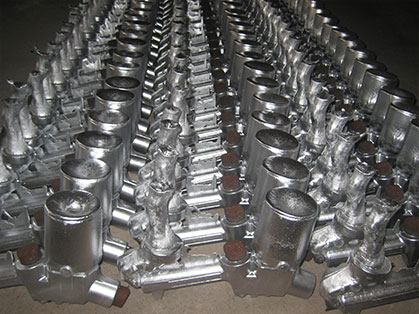Aluminum Casting vs. Steel Casting: A Comparative Analysis
Casting has become a pivotal process in modern manufacturing, serving a wide array of industries and touching the lives of countless people through its products. This method grants manufacturers the freedom to create even the most intricate designs without constraints on shape or form. Two materials, in particular, have risen to prominence in the casting world: aluminum and steel. These materials are favored for their exceptional strength, durability, and aesthetic appeal, making them the top choices for many manufacturers.
Both aluminum and steel possess unique advantages and drawbacks, which is why they continue to be the materials of choice for various applications. A careful comparison of their properties is essential to determine the most suitable option for a specific product.
Key Properties of Aluminum Casting vs. Steel Casting:
Strength:
In general, steel exhibits greater strength than aluminum, although some metals surpass steel in strength. Steel remains an excellent choice when products demand high strength, finding applications across numerous industries. Aluminum is also strong, yet it tends to be considered inferior to steel in terms of sheer strength.
Weight:
Aluminum boasts a significantly lower weight compared to steel, making it the material of choice when strength and lightness are paramount. The weight advantage of aluminum products is particularly valuable, and additional elements can be incorporated into aluminum casting to enhance its strength and rigidity while maintaining a favorable weight profile.
Rust Resistance:
Aluminum demonstrates a higher level of rust resistance than steel, making it particularly suitable for products used in moist or wet environments. Different types of steel exhibit varying degrees of corrosion resistance, with carbon steel being prone to rust and stainless steel offering high corrosion resistance. For rust-free applications, aluminum casting is the preferable option.
Cost:
Both aluminum casting and steel casting can be cost-intensive, with the expense influenced by factors such as product type, quality, and manufacturer. Costs may vary significantly based on these considerations.
Heat Strength:
Aluminum casting exhibits lower heat strength compared to steel casting. Aluminum has a lower melting point, making it easier to melt and shape. However, if a product will be exposed to high-temperature environments, steel casting is the more suitable choice.
Workability:
Workability plays a crucial role in the casting process and subsequent product development. Aluminum is easier to melt, making it more fluid and manageable during pouring into molds. Aluminum castings are generally easier to work on due to their lower stiffness compared to steel castings, which may require more effort during processing.
These properties serve as vital factors when determining the most appropriate casting material for a specific product. Manufacturers take these properties into account, selecting the ideal material based on product requirements and intended applications.
Applications of Aluminum Casting vs. Steel Casting:
Both aluminum and steel casting find extensive applications across various industries:
Aluminum Casting Applications:
Aerospace components benefit from aluminum casting due to its lightweight and robust properties.
Automotive parts and supplies, including water pump housings, oil pumps, and transmission components, are commonly produced using aluminum casting.
Lighting fixtures leverage aluminum casting for its combination of strength, durability, and low weight.
Agricultural equipment, such as crankcase housing and motor housing, often utilizes aluminum casting.
Golf equipment, including brackets, golf ball warmers, handles, and clubs, relies on aluminum casting.

Steel Casting Applications:
Food processing and culinary machinery make use of steel castings, such as 304 and 316 stainless steel castings.
Cutlery and kitchenware, including knives, forks, and spoons, frequently feature steel castings.
The marine industry employs steel castings in marine components and equipment.
Medical tools and supplies, such as surgical instruments, operating room equipment, and wheelchairs, benefit from the durability of steel castings.
Pipe fittings, construction equipment, and various building components commonly utilize steel castings.
Conclusion: Aluminum vs. Steel Casting
When selecting a casting material, it is essential to carefully consider the specific properties and requirements of the intended product. Both aluminum casting and steel casting have their strengths and limitations, making them suitable for diverse applications. Consulting with experts in the field can provide valuable guidance in choosing the ideal material for a given project. With numerous casting manufacturers and suppliers available, selecting the right partner is crucial for a successful and efficient casting process.
Dongrun Casting have 20000 square meters facility houses and 200 production & test equipment, From quotation and tooling design to casting and finished machining, we can work with you at every stage. We serves wide range of industries-from Fortune 500 corporations to small and midsize OEMs. Our products includes: Automotive&Trucking, Electric Utility & Communications, Metering System, Hydraulic Industry, Medical Devices, Lighting, Fuel and Gas Pressure, Furniture parts.
More Details : www.dongruncasting.com
